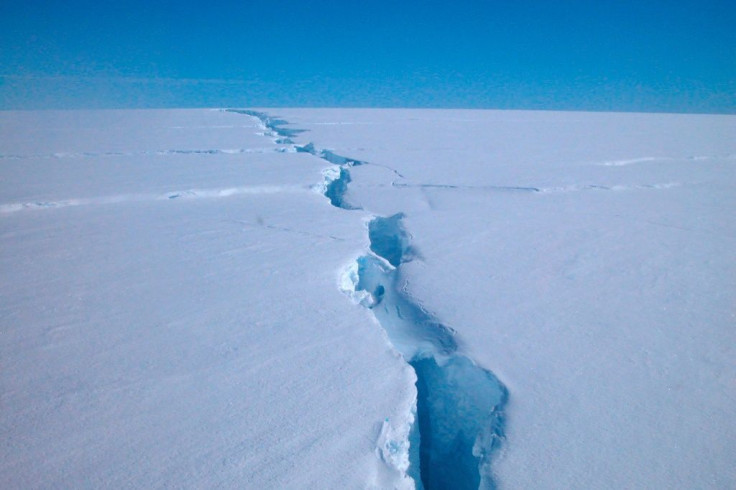Nearly Half Of Canada's Last Ice Shelf Collapses, Measures Bigger Than Manhattan

KEY POINTS
- Around 43% of the Milne Ice Shelf collapsed over the weekend into the Arctic Sea
- The broken section of the shelf measured around 80 km, bigger than the size of New York City's Manhattan-borough
- Rising temperatures in the region due to climate change was credited as a primary reason for the collapse
Nearly half of Canada’s last intact ice shelf collapsed into the Arctic Sea over the weekend, with the collapsed section measured to be larger than New York borough of Manhattan. Images and videos of the shelf’s collapse online by the Canadian Ice Service, which the service credited to a combination of temperature, offshore winds and open water.
A huge section of the Milne #IceShelf has collapsed into the #Arctic Ocean producing a ~79 km2 ice island. Above normal air temperatures, offshore winds and open water in front of the ice shelf are all part of the recipe for ice shelf break up. #MilneIceIsland #Nunavut #seaice pic.twitter.com/fGfj8Me9tA
— ECCC Canadian Ice Service (@ECCC_CIS) August 2, 2020
Satellite animation, from July 30 to August 4, shows the collapse of the last fully intact #iceshelf in #Canada. The Milne Ice Shelf, located on #EllesmereIsland in #Nunavut, has now reduced in area by ~43%. #MilneIceIsland #seaice #Arctic #earthrightnow #glacier pic.twitter.com/jjs1gawoxA
— ECCC Canadian Ice Service (@ECCC_CIS) August 4, 2020
“The northern portion of the Milne Ice Shelf calved between July 30, 2020 and July 31, 2020. The ice shelf was reduced from 187 km2 to 106 km2 and a large ice island drifted north into the Arctic Ocean,” Water and Ice Research Laboratory said in a press release.
“This ice island broke into two parts by August 3, 2020 — the larger one was 55 km2 (~10 x 5.5 km) and the smaller one was 24 km2 (~5 x 5 km). Due to the presence of pre-existing fractures in the remaining Milne Ice Shelf, there is a potential for further destabilization.”
University of Ottawa glaciology professor Luke Copland said the region around the Milne Ice Shelf was 9 degrees Fahrenheit higher than the average from 1980 to 2010. This is the byproduct of rising Arctic heat waves hitting the region in recent years, causing the region to warm faster than most of the world.
“There aren’t very many ice shelves around the Arctic anymore,” Copland told the Associated Press. “It seems we’ve lost pretty much all of them from northern Greenland and the Russian Arctic. There may be a few in a few protected fjords.”
© Copyright IBTimes 2025. All rights reserved.





















